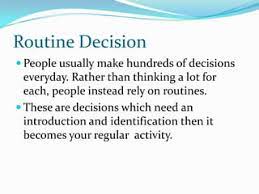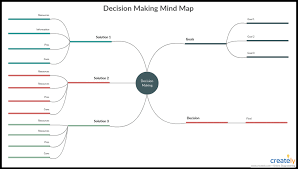Types of Strategic Decision Making
Strategic decision making is a crucial aspect of any organization’s success. It involves the process of identifying and evaluating various options to determine the best course of action that aligns with the organization’s long-term goals and objectives. Different types of strategic decision making approaches exist, each with its own advantages and considerations. Let’s explore some common types:
Rational Decision Making:
This approach involves a systematic analysis of available data, facts, and information to make logical decisions. It follows a step-by-step process, starting from problem identification to generating alternatives, evaluating them, and selecting the best option based on objective criteria. Rational decision making relies heavily on quantitative analysis and is suitable for situations where there is ample time and resources for thorough evaluation.
Intuitive Decision Making:
Intuition plays a significant role in this type of decision making. It relies on individuals’ instincts, experience, and gut feelings to make quick judgments without extensive analysis. Intuitive decision making is often used in situations where time is limited or when dealing with complex or ambiguous problems. While it can be effective, it also carries the risk of biases or subjective influences.
Incremental Decision Making:
This approach involves making small adjustments or changes to existing strategies over time rather than implementing major shifts all at once. Incremental decision making allows organizations to adapt gradually while monitoring outcomes before committing fully. It reduces risks associated with sudden changes but may lead to missed opportunities if not supplemented with periodic evaluations.
Political Decision Making:
Political decision making recognizes that organizations are composed of diverse stakeholders with different interests and power dynamics. This approach involves negotiation, compromise, and consensus-building among various groups within the organization or external parties affected by the decision. Political decision making aims to balance conflicting interests and maintain harmony within the organization.
Bounded Rationality:
Bounded rationality acknowledges that humans have limited cognitive capacities and cannot always process all available information. This approach involves making decisions based on simplified models, rules of thumb, or heuristics. Bounded rationality recognizes the need to make reasonable decisions within the constraints of time, information overload, and cognitive limitations.
Crisis Decision Making:
Crisis situations demand quick decisions under high-pressure circumstances. This type of decision making focuses on rapid response and problem containment. Crisis decision making often requires leaders to rely on their experience, expertise, and ability to think on their feet. It may involve prioritizing short-term goals over long-term considerations.
It’s important to note that these types of strategic decision making are not mutually exclusive; they can be combined or adapted based on the specific context and nature of the decision at hand. Organizations may also develop their own unique approaches that align with their culture and values.
Ultimately, effective strategic decision making requires a balance between analytical thinking, intuition, stakeholder engagement, and adaptability. By understanding these different types of strategic decision making approaches, organizations can enhance their ability to navigate complex challenges and drive sustainable success in an ever-changing business landscape.
A Comprehensive Guide to Types and Strategies of Strategic Decision Making
- What are the five decision-making strategies?
- What are the 7 decision-making strategies?
- What are the 3 types of decision-making?
- What are the different strategies of decision-making?
What are the five decision-making strategies?
There are several decision-making strategies that individuals and organizations can employ. While there are more than five strategies, here are five commonly recognized ones:
- Rational Decision Making: This strategy involves a systematic approach to decision making, where individuals gather relevant data, analyze options, and select the best alternative based on objective criteria. It emphasizes logical thinking and quantitative analysis to make informed choices.
- Intuitive Decision Making: Intuition is the basis of this strategy, where individuals rely on their instincts and past experiences to make quick decisions without extensive analysis. Intuitive decision making is often used in situations where time is limited or when dealing with complex or ambiguous problems.
- Collaborative Decision Making: This strategy involves involving multiple stakeholders in the decision-making process to ensure diverse perspectives and collective buy-in. Collaborative decision making aims to foster teamwork, enhance creativity, and build consensus among individuals with different expertise and backgrounds.
- Incremental Decision Making: With this strategy, decisions are made gradually by implementing small changes or adjustments over time rather than making drastic shifts all at once. Incremental decision making allows for flexibility and adaptation while monitoring outcomes before committing fully.
- Risk-based Decision Making: This strategy involves assessing potential risks associated with different options before making a decision. It focuses on identifying potential hazards or uncertainties and weighing them against potential rewards or benefits. Risk-based decision making helps mitigate potential negative consequences by considering the likelihood and impact of various outcomes.
It’s important to note that these strategies can be used individually or in combination depending on the specific situation and context of the decision being made. Each strategy has its own strengths and considerations, so understanding them can help individuals and organizations approach decision making more effectively.
What are the 7 decision-making strategies?
There are various decision-making strategies that individuals and organizations can employ to approach different situations. While the number of strategies may vary depending on the source, here are seven commonly recognized decision-making strategies:
- Rational Decision Making: This strategy involves a logical and systematic approach to decision making. It follows a structured process of problem identification, generating alternatives, evaluating options based on objective criteria, and selecting the best choice.
- Intuitive Decision Making: Intuition plays a significant role in this strategy. It relies on individuals’ instincts, experience, and gut feelings to make quick judgments without extensive analysis. Intuitive decision making is often used in situations where time is limited or when dealing with complex or ambiguous problems.
- Incremental Decision Making: This strategy involves making gradual adjustments or changes to existing strategies over time rather than implementing major shifts all at once. It allows organizations to adapt gradually while monitoring outcomes before committing fully.
- Political Decision Making: Recognizing that organizations have diverse stakeholders with different interests and power dynamics, this strategy involves negotiation, compromise, and consensus-building among various groups within or outside the organization.
- Bounded Rationality: Bounded rationality acknowledges human limitations in processing all available information due to time constraints or cognitive overload. This strategy involves making decisions based on simplified models, rules of thumb, or heuristics that help navigate complex situations efficiently.
- Crisis Decision Making: In crisis situations that demand quick decisions under high pressure, this strategy focuses on rapid response and problem containment. Leaders rely on their experience, expertise, and ability to think on their feet while prioritizing short-term goals over long-term considerations.
- Data-Driven Decision Making: This strategy emphasizes utilizing data and analytics to inform decision making. It involves gathering relevant data, analyzing it rigorously, and deriving insights to guide choices objectively.
It’s important to note that these strategies are not mutually exclusive; they can be combined or adapted based on the specific context and nature of the decision at hand. Choosing the most appropriate strategy depends on factors such as time constraints, available information, complexity, and stakeholder dynamics.
What are the 3 types of decision-making?
The three types of decision-making are:
Programmed Decision-Making:
Programmed decision-making refers to making decisions that are routine, repetitive, and well-defined. These decisions are based on established policies, rules, or procedures that have been developed in advance. Since these decisions occur frequently and follow a predetermined set of guidelines, they can be made quickly and efficiently. Examples of programmed decision-making include routine operational tasks, such as inventory management or employee scheduling.
Non-Programmed Decision-Making:
Non-programmed decision-making involves making decisions in unique or unfamiliar situations where there are no pre-established guidelines or procedures to follow. These decisions are usually complex, strategic, and require careful analysis and evaluation of various alternatives. Non-programmed decisions often involve higher levels of uncertainty and risk. Examples include major business investments, entering new markets, or handling unexpected crises.
Semi-Structured Decision-Making:
Semi-structured decision-making falls between programmed and non-programmed decision-making. In semi-structured decisions, some aspects are well-defined and follow established guidelines, while other aspects require subjective judgment or evaluation of alternatives. These decisions involve a mix of routine elements along with some level of creativity or adaptability in addressing specific circumstances. Examples include hiring decisions where certain criteria need to be met but also require subjective assessment of candidates’ qualifications.
Understanding the different types of decision-making helps individuals and organizations effectively approach various situations by employing suitable strategies and techniques for each type. It allows for better problem-solving, risk management, and overall decision quality across different contexts.
What are the different strategies of decision-making?
There are several different strategies of decision-making that individuals and organizations can employ. These strategies vary in their approach, level of involvement, and the decision-making process. Let’s explore some common strategies:
Autocratic Decision-Making:
In this strategy, a single individual or a small group makes decisions without seeking input or consensus from others. The decision-maker has complete authority and control over the final outcome. Autocratic decision-making is suitable in situations where quick decisions are required, or when there is a need for centralized authority.
Participative Decision-Making:
This strategy involves involving multiple stakeholders in the decision-making process. It encourages collaboration, brainstorming, and gathering input from various individuals or groups who may be affected by the decision. Participative decision-making fosters a sense of ownership and commitment among participants, leading to better acceptance of the final decision.
Consensus Decision-Making:
Consensus decision-making aims to reach an agreement that satisfies all participants involved in the decision-making process. It requires open communication, active listening, and a willingness to find common ground among stakeholders. Consensus-based decisions often lead to higher levels of commitment and cooperation since everyone’s opinions are considered.
Majority Rule Decision-Making:
In this strategy, decisions are made based on a majority vote among the participants involved in the process. The option with the highest number of votes becomes the final decision. Majority rule is commonly used when there is limited time or when it is necessary to move forward with a clear direction.
Decision by Authority:
This strategy involves delegating decision-making authority to specific individuals or departments within an organization based on their expertise or role. Decisions are made by those with relevant knowledge and experience in a particular area, ensuring efficient and informed choices.
Data-Driven Decision-Making:
Data-driven decision-making relies on analyzing relevant data and information before making choices. It involves collecting and analyzing data from various sources to identify patterns, trends, and insights that can inform the decision-making process. This strategy helps minimize biases and subjectivity by relying on objective facts.
Trial and Error Decision-Making:
Trial and error decision-making involves experimenting with different options and learning from the results. It is often used when there is uncertainty or limited information available. Through trial and error, individuals or organizations can gain valuable insights that help refine their decision-making approach over time.
It’s important to note that these strategies are not mutually exclusive, and different situations may call for different approaches. Effective decision-makers consider the context, complexity, urgency, and potential impact of a decision when selecting the appropriate strategy. They may also adapt their approach based on feedback, new information, or changing circumstances.
By understanding these different strategies of decision-making, individuals and organizations can enhance their ability to make informed choices that align with their goals and values.


